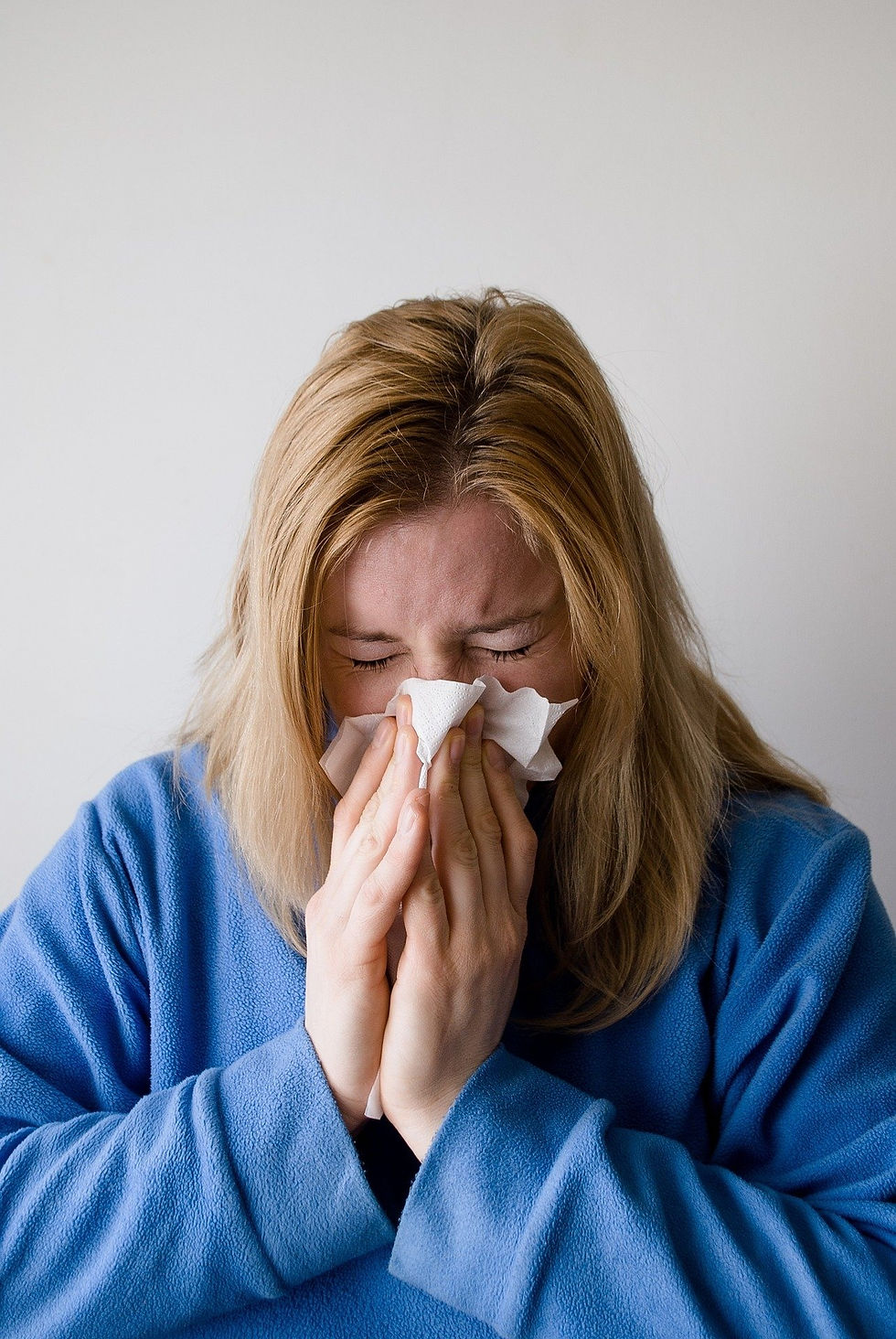Allergies
- Joanne Lee
- Aug 16, 2020
- 3 min read
By Diane Zhou
Part of the collaboration with JOURNYS

I have vivid memories of eating lunch in elementary school, sitting at those outdoor picnic tables with four seats and holes in the table and seats. All the tables at my elementary school were a maroonish red, except for the two tables that were a faded blue: the peanut allergy tables. Kindergarten me didn’t understand allergies, only that we couldn’t eat Reese’s peanut butter cups at that table. But obviously, allergies are more than that.
An allergy occurs when the immune system reacts to a foreign substance or food that most people don’t have a reaction to. This could be anything from peanuts to bee pollen to penicillin to jellyfish stings to chocolate. Typical allergy symptoms include swelling, sneezing, runny noses, watery eyes, or a cough. However, some allergies can trigger anaphylaxis--a life-threatening reaction that can cause a loss of consciousness, drop in blood pressure, shortness of breath, and weak pulse, among other things.
Allergies are usually caused by overeager immune systems. Immune systems usually produce antibodies, blood proteins that counteract foreign objects. These antibodies will chemically combine with foreign objects, also known as antigens, to protect the body. In the case of an allergy, antibodies called Immunoglobulin E (IgE) trigger responses when they encounter allergens. These antibodies trigger the release of histamine, which helps the body get rid of these foreign substances by causing inflammation. Inflammation can cause membranes to make more mucus--causing a runny nose, sneezing, or coughing--or make your eyes and nose itch. This is also why anti-allergy medications are antihistamines: they block the release of histamine, thus relieving symptoms of an allergic reaction.

But some scientists are still unsure about the involvement of IgEs in allergies. New research shows that a group of T cells, known as TH2 cells, may have a part in causing allergies. T cells play a role in immune response and are a subtype of white blood cells. Not all TH2 cells cause allergies; some protect against invaders and parasites. However, it is hard to separate the advantageous ones from the disadvantageous ones. In a particular study, scientists were able to identify that people with allergies had more copies of two marker proteins and fewer copies of four others. Marker proteins are used by the immune system to identify cells. The scientists conducting this study dubbed the group of TH2 cells associated with allergies TH2A cells. Essentially, TH2A cells are abundant in the blood of people with allergies to a variety of triggers, but absent from those who don’t.
Treatment is also being developed and seems to be working. In the same study, scientists found that giving participants larger and larger doses of allergy-inducing peanut proteins allowed participants to eventually tolerate peanuts. In addition, there was a 90% decrease in TH2A cells of participants with successful treatment.
At the end of the day, scientists are still confused about allergies. They have many questions about how they came to be, what exactly they do in the body, and how they can treat allergies. For now, immunologist Ruslan Medzhitov would like people to stop seeing allergies as a disease. He says, “You’re sneezing to protect yourself. The fact that you don’t like sneezing, that’s tough luck. Evolution doesn’t care how you feel.”
What did you learn?
1. What are allergies caused by?
Allergies occur when overeager immune systems produce an antibody called Immunoglobulin E (IgE), which triggers the release of histamine. Histamine causes inflammation to get rid of the allergen, which in turn produces familiar allergy symptoms like sneezing, a runny nose, and coughing.
2. What seems to be the role of TH2A cells in allergies?
A specific group of T cells, known as TH2A cells, may cause allergies. T cells are a subtype of white blood cells that help protect the body from invaders. TH2A cells have specific marker proteins and are abundant in people with allergies and scarce in people without allergies.
Citations:
Image Credit:
pixabay.com




Comments